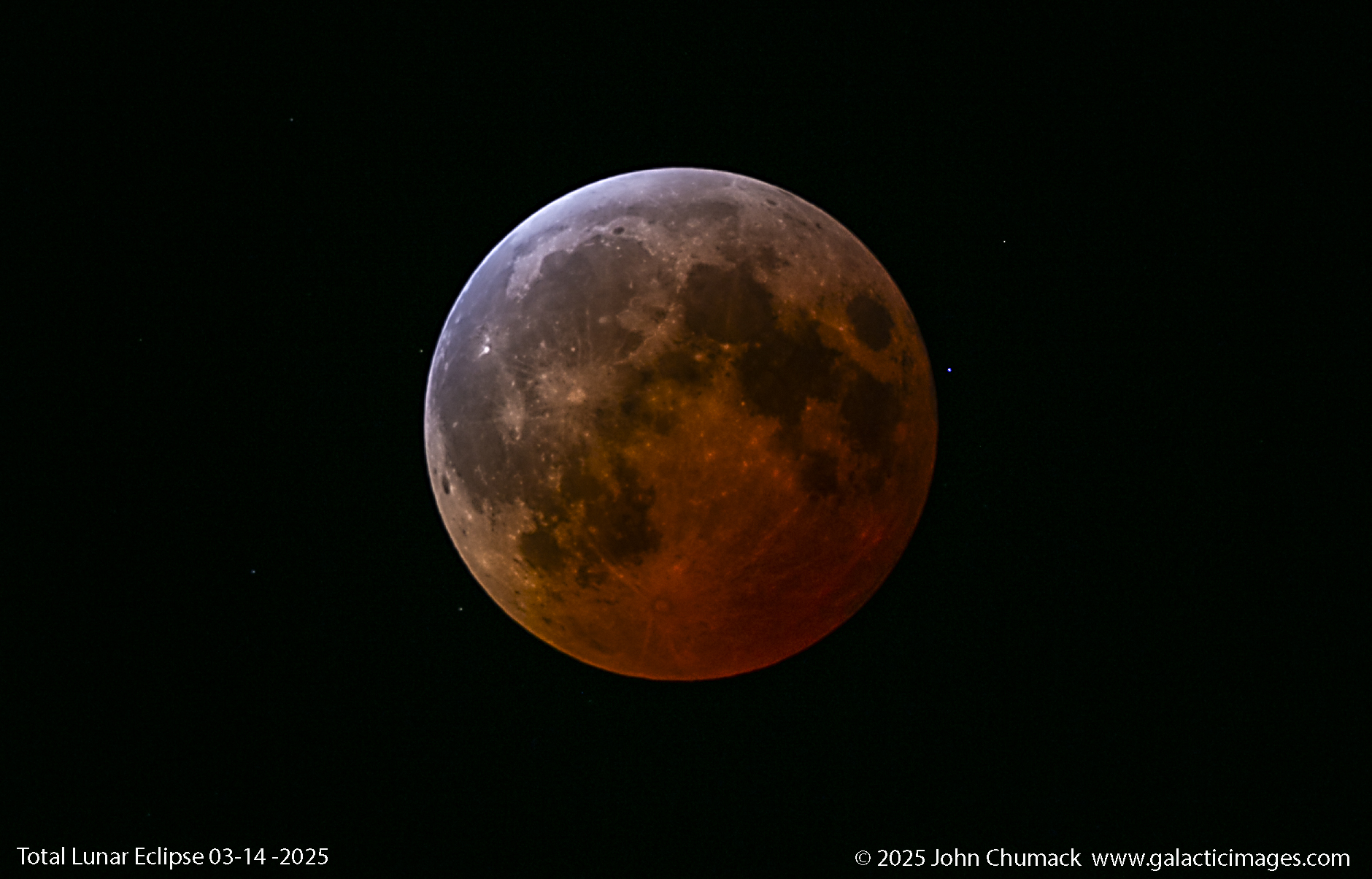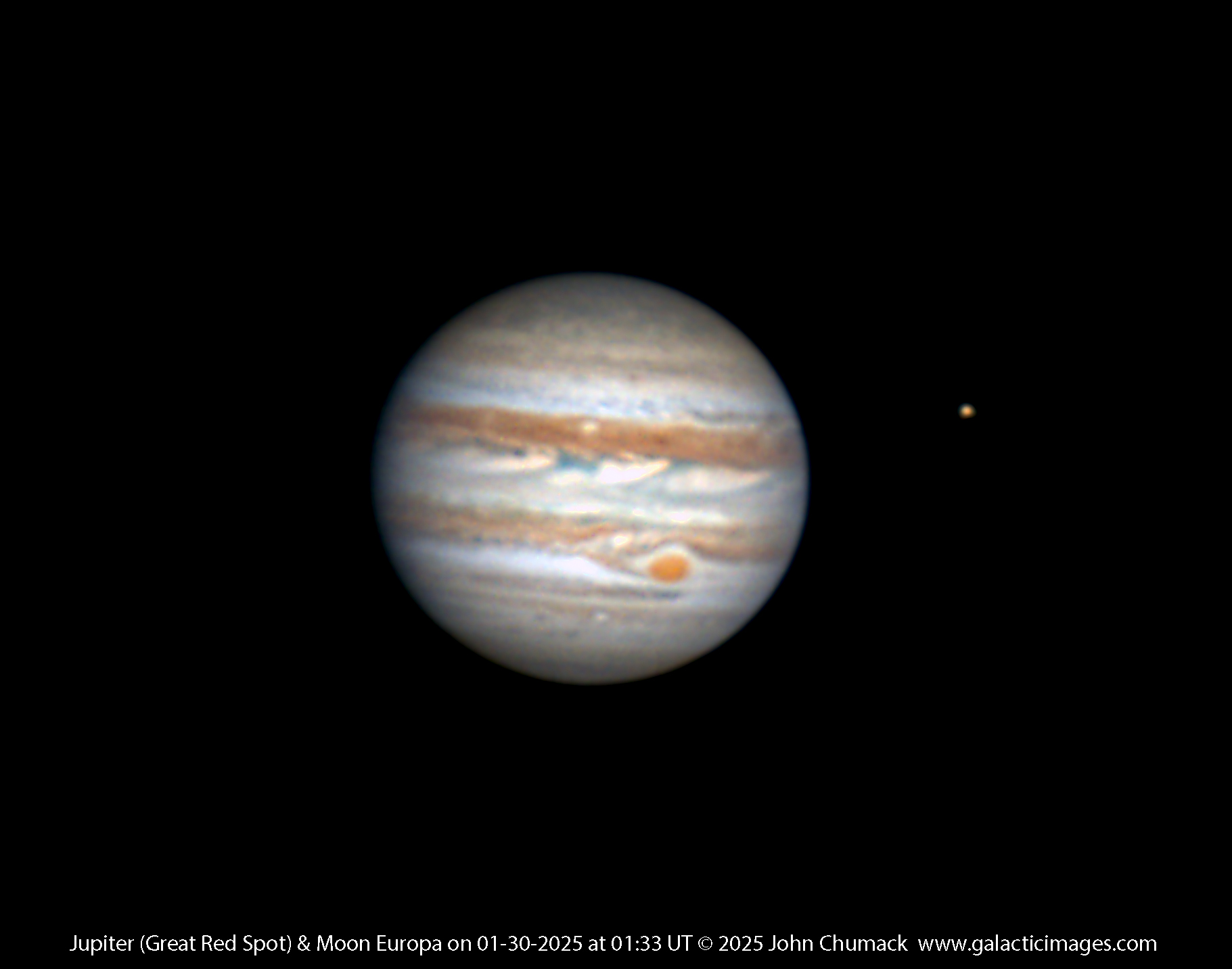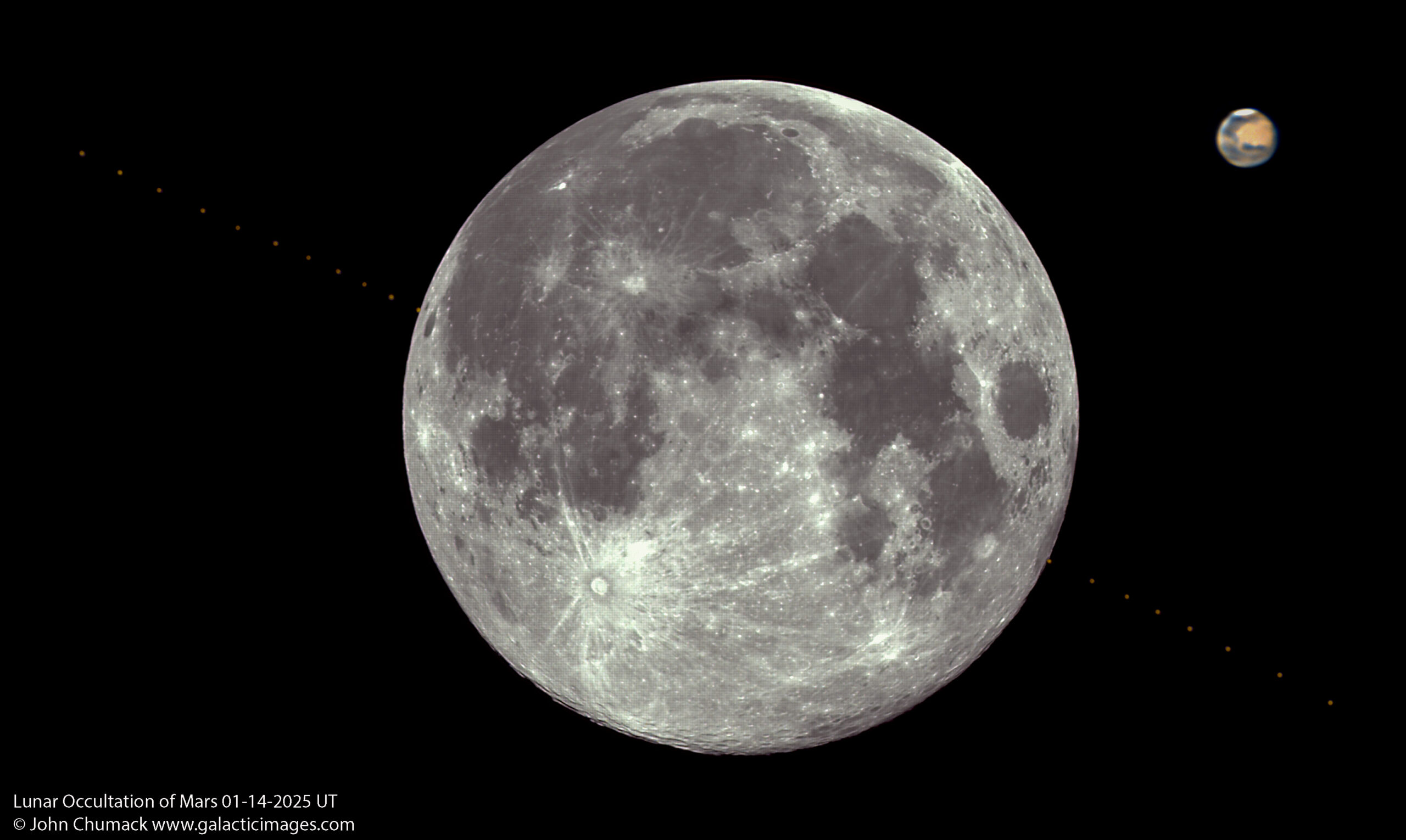Total Lunar Eclipse -Totality 03-14-2025
Total Lunar Eclipse 14 March 2025…up all night, but just a quick post before heading off to work,…more images to come later.
4 Inch F7 APO Refractor Telescope, AVX Mount, Canon 6D DSLR, ISO 100, 4 second exposure, Backyard Observatory In Dayton, Ohio.
Best Regards,
John Chumack
www.galacticimages.com
The Planet Mars on 01-30-2025 at 01:46 UT
Mars was showing some nice details including the Polar Ice cap, not bad for the Planet being only 14 arc-seconds in diameter.
C-11 Telescope, 2x barlow, ADC, QHY462mc Cmos Camera, 3.3ms exposures, Fire-Capture SER Video, 5,000 out of 15, 000 frames
stacked in Astrosurface, Registax6, and Adobe Raw CC 2025
Captured from my backyard Observatory in Dayton, Ohio.
Best Regards,
John Chumack
www.galacticimages.com
Jupiter with The Great Red Spot & Moon Europa on 01-30-2025 at 01:33 UT
Lunar Occultation of the Planet Mars – Reappearance 01-14-2025 UT
Lunar Occultation of The Planet Mars – Seestar 50s Sequence
The Lunar Occultation of the Planet Mars on 01-14-2025 UT
The Lunar Occultation of the Planet Mars
We were lucky enough to have clear skies for this, …here is one of my preliminary quick process shots of the Full Wolf Moon Lunar Occultation Of Mars last night, I captured both disappearance and the reappearance of Mars close-up with my C-11 Telescope from my backyard in Dayton, Ohio. I have a ton of Data to process yet and lots of Video footage from my QHY462 Camera, but thought I would toss this quick one out taken 01-14-2025 @ 02:08 UT., as it may be a while before I have the time to go through it all. More to come later!
C-11 Telescope, ADC, 2x Barlow, QHY462MC Cmos Camera.
Fire-Capture software SER Video Files.
Best Regards,
John Chumack
www.galacticimages.com
Jupiter with moons Io & Europa captured on 10-08-2024 at 10:20 UT
Jupiter with moons Io & Europa captured on 10-08-2024 at 10:20 UT from my backyard observatory in Dayton, Ohio. The Seeing was 8/10, so I got some decent cloud top details.
C-11 SCT Telescope, Bisque MyT Mount, QHY462MC Cmos Camera, 2x Barlow, ADC, Fire-Capture Software, SER Video File Captured, 6ms exposures,
3,100 frames stacked out of 7,300, Processing in Astrosurface, Registax6, Adobe Raw CC 2025.
Best Regards,
John Chumack











